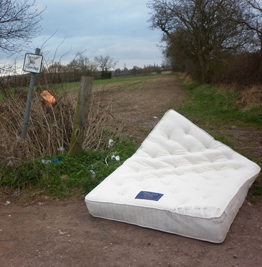In the UK, the makers of political policy examine the economic and social impacts of crime; but the environmental impacts have not, to date, been included. A new study, published in the Journal of Industrial Ecology, estimates the carbon footprint of crime.
UK-based researchers were led by an engineering doctorate student, Helen Skudder, in the Centre for Environmental Strategy at the University of Surrey.
The authors use a complex method of quantification—applying carbon emissions factors to the monetised costs of crime using environmentally-extended input-output analysis. This allowed them to estimate the carbon footprint of crime, in England and Wales in 2011. They found it to be more than four million metric tons of CO2e. That is equivalent to the carbon emissions of around 900,000 UK homes.
Of the offence types considered, burglary resulted in the largest proportion of the total footprint (30 per cent) due to large volume of offences and the carbon associated with replacing stolen or damaged goods. Criminal justice system services (policing, prisons and courts) also accounted for a large proportion of the total footprint (21pc of all crime and 49pc of police recorded offences).
The limitations to the findings are admitted by the researchers, and mainly result from the footprinting methodology. Although it is tempting to conclude from the research that crime reduction will automatically result in a reduction of carbon emissions, this is not necessarily the case, according to the researchers, due to the rebound effect. That is, the study considered how money spent addressing crime might be spent in the absence of crime. By comparing the carbon emissions associated with this re-spending of the money with the carbon footprint of crime, it was found that the most likely rebound effect would be an increase in emissions of around 2pc.
Helen Skudder says: “Although there are limitations to the methodology, we’ve highlighted some interesting findings, such as the large proportion of the footprint which arises due to burglaries. Looking at burglary in more detail, we find that emissions not only arise from policing and the criminal justice system response to crime, but also that the carbon arising due to replacement of stolen items is significant. The analysis illustrates the complex ways that institutions in society and the associated economic activity shape the impact we have on our climate. We have shown that it is possible to take into account the environmental implications of crime alongside the social and economic costs, as part of crime prevention policy appraisals.”
You can see the research paper in full at http://onlinelibrary.wiley.com/doi/10.1111/jiec.12457/full.
Pictured; fly-tipped mattress, Derbyshire.










